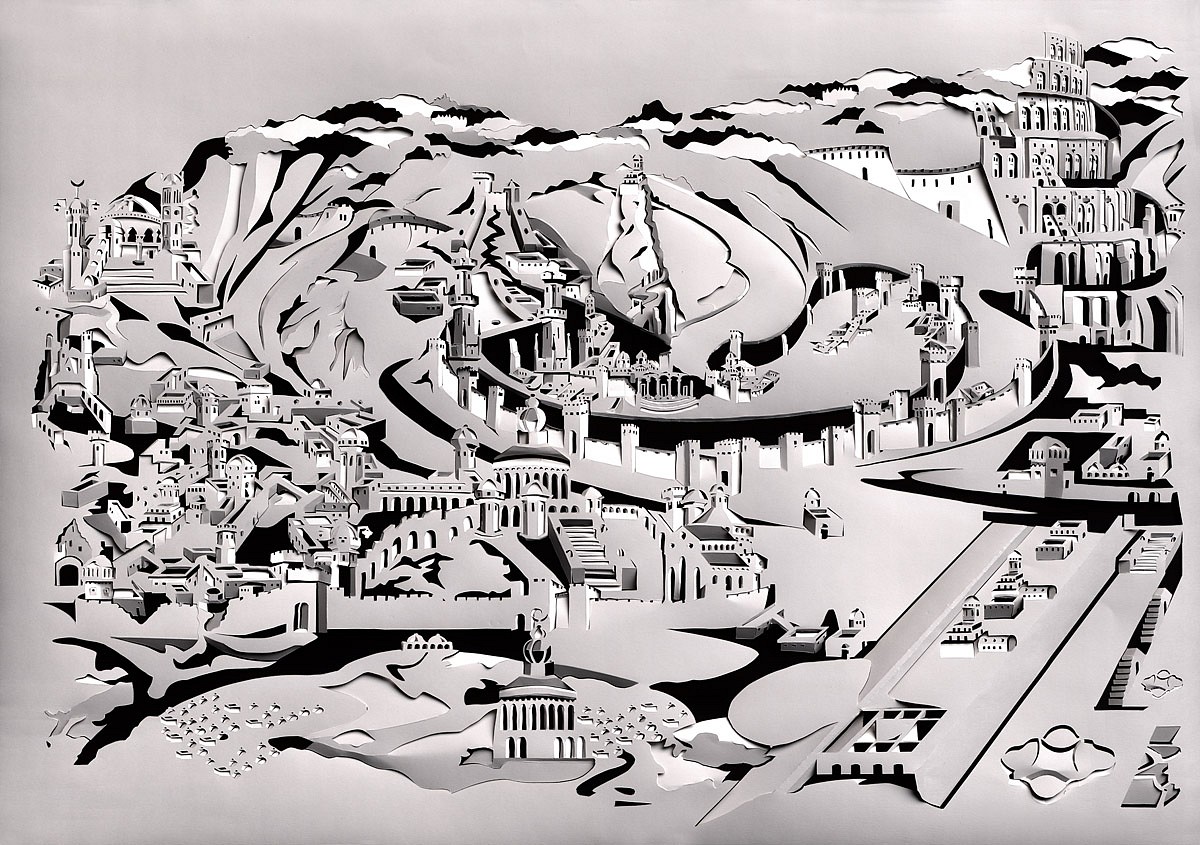PRESS RELEASE

Upturned Chairs
Oct 24 – Dec 31, 2013
Peleg Dishon often engages with the interface between man and machine. In his previous artwork, he created, by means of a unique technique he developed, works that combined papercuts with mechanical scanning and whose character ranged somewhere between painting, photography and architecture. Employing this technique, the artist sought to invite the viewer to see what the scanner “sees” as it scans. In the current exhibition, titled “Upturned Chairs,” Dishon continues to investigate the complex relationship that exists in the junction between memorialization, documentation and reestablishment and creates the step that completes the papercuts. Black velvet serves as a platform on which to build the image, which is both positive and negative at the same time. The artist asks the viewer to turn into a kind of mechanical scanner that “illuminates” the scanned object, reveals it and produces it through the perception of its own reflection. Divided into two sections, the exhibition examines the modes of human perception and the mental and visual hierarchies, through the presentation of images that are simultaneously discovered, created and dismantled by the viewer. Using the unique architecture of the exhibition space, Dishon brings together diverse and seemingly distant worlds of content: the moon landing, the kibbutz where he grew up, science fiction, coded language, Chinese scrolls, music and more. “For All Mankind,” the first section of the exhibition, is screened along the entire length of a long corridor and is actually a moving scan of the papercut. The long panorama is composed of different layers that accumulate on a dark, moon-like background, and from which appear Chinese dragons, landing vehicles, a shadow flag and other objects. The second section, “Upturned Chairs,” was built for the dark interior space in the middle of the gallery. It consists of six panels that are joined to form a composition, also long and narrow, which can be perceived as an abstract painting but actually depicts a kind of kibbutz landscape, similar to the place where Dishon was born and raised. The images on the panels can be deciphered not through perspective, but rather as parts that do not allow a perception of the whole. The context for this decoding method can be found in the attempt to introduce into the painting an added dimension: duration. The work is based upon two main sources. The first is a sort of visual code written by the musician Brian Eno in the tracks on his 1978 album “Ambient 1: Music for Airports,” in which each musical section has its own code. Eno chose not to use the standard system of musical notation, in which notes are the universal mode of encoding a sound into an image. Instead, he presents compositions whose durations are different while the size of their graphic representations is identical. This constant shifting transforms continuous time into a permanent space by creating a rhythm at which the elements appear and vary. Thus, a complete image can be experienced in its entirely only by following the reappearance of the various images and the changes that occur within them along the length of the painting/axis. The second source is the Chinese scroll painting “Spring Morning in the Han Palace.” The scroll depicts court life in the king’s palace during the Ming dynasty (1368-1644). The scroll is not meant to be viewed in its entirety, but rather section by section, so that unrolling it at one end causes it to roll up at the other end. Fixed elements, whose nature changes in accordance with the scene being shown, appear along the length of the entire scroll. In a similar fashion, Dishon’s landscape appears only partially according to the viewer’s movement. Movement in a certain direction illuminates one panel at a time while simultaneously darkening its neighbor, and the elements reappear along the length of the composition, emerging from the darkness and then being sucked back into it. The installation “Upturned Chairs” creates systems of movement along routes. It can be thought of as the shadow of a ring made up of two crescent moons: one rising and one setting. The ring does not appear by itself; rather, it is created by diminution. Thus, the ring is actually created in the viewer’s imagination, from the vacuum that is revealed enwrapped/entrapped between the shadows. Meital Manor & Lior Schur

